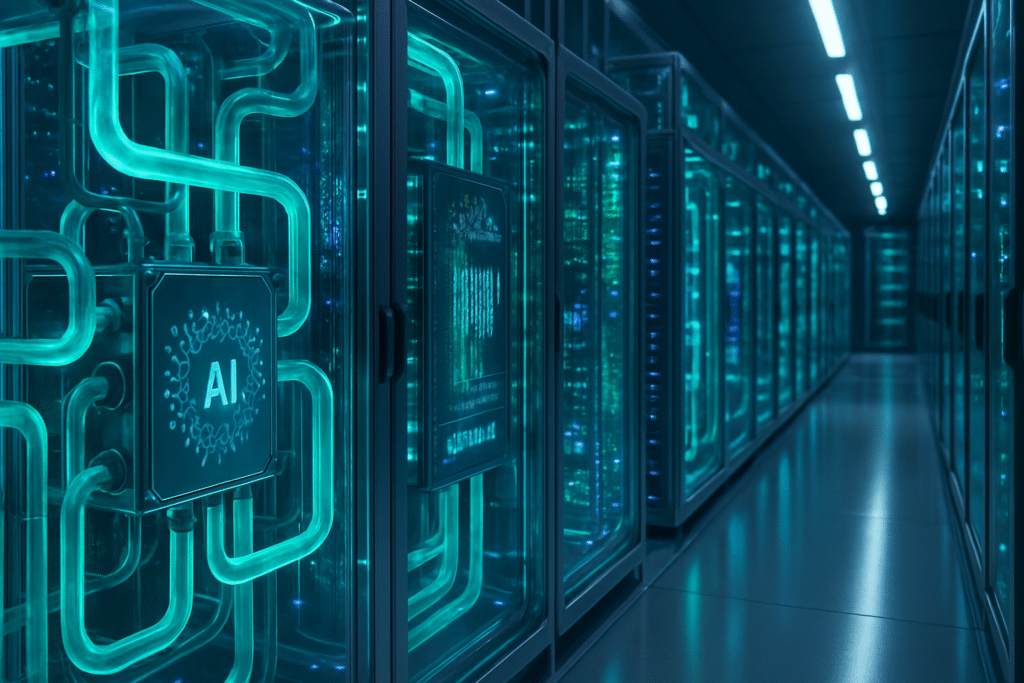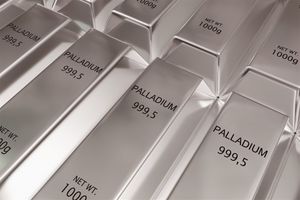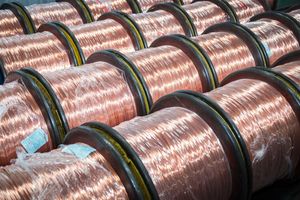
The relentless pursuit of artificial intelligence has ignited an unprecedented demand for computational power, pushing the boundaries of traditional data center design. A silent revolution is now underway, as massive new data centers, purpose-built for AI workloads, are rapidly adopting advanced liquid cooling technologies. This pivotal shift is not merely an incremental upgrade but a fundamental re-engineering of infrastructure, promising to unlock unprecedented performance, dramatically improve energy efficiency, and pave the way for a more sustainable future for the AI industry.
This strategic pivot towards liquid cooling is a direct response to the escalating heat generated by powerful AI accelerators, such as GPUs, which are the backbone of modern machine learning and generative AI. By moving beyond the limitations of air cooling, these next-generation data centers are poised to deliver the thermal management capabilities essential for training and deploying increasingly complex AI models, ensuring optimal hardware performance and significantly reducing operational costs.
The Deep Dive: Engineering AI's Thermal Frontier
The technical demands of cutting-edge AI workloads have rendered conventional air-cooling systems largely obsolete. GPUs and other AI accelerators can generate immense heat, with power densities per rack now exceeding 50kW and projected to reach 100kW or more in the near future. Traditional air cooling struggles to dissipate this heat efficiently, leading to "thermal throttling" – a situation where hardware automatically reduces its performance to prevent overheating, directly impacting AI training times and model inference speeds. Liquid cooling emerges as the definitive solution, offering superior heat transfer capabilities.
There are primarily two advanced liquid cooling methodologies gaining traction: Direct Liquid Cooling (DLC), also known as direct-to-chip cooling, and Immersion Cooling. DLC involves circulating a non-conductive coolant through cold plates mounted directly onto hot components like CPUs and GPUs. This method efficiently captures heat at its source before it can dissipate into the data center environment. Innovations in DLC include microchannel cold plates and advanced microfluidics, with companies like Microsoft (NASDAQ: MSFT) developing techniques that pump coolant through tiny channels etched directly into silicon chips, proving up to three times more effective than conventional cold plate methods. DLC offers flexibility, often integrated into existing server architectures with minimal adjustments, and is seen as a leading solution for its efficiency and scalability.
Immersion cooling, on the other hand, takes a more radical approach by fully submerging servers or entire IT equipment in a non-conductive dielectric fluid. This fluid directly absorbs and dissipates heat. Single-phase immersion keeps the fluid liquid, circulating it through heat exchangers, while two-phase immersion utilizes a fluorocarbon-based liquid that boils at low temperatures. Heat from servers vaporizes the fluid, which then condenses, creating a highly efficient, self-sustaining cooling cycle that can absorb 100% of the heat from IT components. This enables significantly higher computing density per rack and ensures hardware runs at peak performance without throttling. While immersion cooling offers superior heat dissipation, it requires a more significant infrastructure redesign and specialized maintenance, posing initial investment and compatibility challenges. Hybrid solutions, combining D2C with rear-door heat exchangers (RDHx), are also gaining favor to maximize efficiency.
Initial reactions from the AI research community and industry experts are overwhelmingly positive. The consensus is that liquid cooling is no longer a niche or experimental technology but a fundamental requirement for the next generation of AI infrastructure. Industry leaders like Google (NASDAQ: GOOGL) have already deployed liquid-cooled TPU pods, quadrupling compute density within existing footprints. Companies like Schneider Electric (EPA: SU) are expanding their liquid cooling portfolios with megawatt-class Coolant Distribution Units (CDUs) and Dynamic Cold Plates, signaling a broad industry commitment. Experts predict that within the next two to three years, every new AI data center will be fully liquid-cooled, underscoring its critical role in sustaining AI's rapid growth.
Reshaping the AI Landscape: Corporate Impacts and Competitive Edges
The widespread adoption of liquid-cooled data centers is poised to dramatically reshape the competitive landscape for AI companies, tech giants, and startups alike. Companies at the forefront of this transition stand to gain significant strategic advantages, while others risk falling behind in the race for AI dominance. The immediate beneficiaries are the hyperscale cloud providers and AI research labs that operate their own data centers, as they can directly implement and optimize these advanced cooling solutions.
Tech giants such as Google (NASDAQ: GOOGL), Microsoft (NASDAQ: MSFT), and Amazon (NASDAQ: AMZN), through its Amazon Web Services (AWS) division, are already heavily invested in building out AI-specific infrastructure. Their ability to deploy and scale liquid cooling allows them to offer more powerful, efficient, and cost-effective AI compute services to their customers. This translates into a competitive edge, enabling them to host larger, more complex AI models and provide faster training times, which are crucial for attracting and retaining AI developers and enterprises. These companies also benefit from reduced operational expenditures due to lower energy consumption for cooling, improving their profit margins in a highly competitive market.
For specialized AI hardware manufacturers like NVIDIA (NASDAQ: NVDA), the shift towards liquid cooling is a boon. Their high-performance GPUs, which are the primary drivers of heat generation, necessitate these advanced cooling solutions to operate at their full potential. As liquid cooling becomes standard, it enables NVIDIA to design even more powerful chips without being constrained by thermal limitations, further solidifying its market leadership. Similarly, startups developing innovative liquid cooling hardware and integration services, such as those providing specialized fluids, cold plates, and immersion tanks, are experiencing a surge in demand and investment.
The competitive implications extend to smaller AI labs and startups that rely on cloud infrastructure. Access to liquid-cooled compute resources means they can develop and deploy more sophisticated AI models without the prohibitive costs of building their own specialized data centers. However, those without access to such advanced infrastructure, or who are slower to adopt, may find themselves at a disadvantage, struggling to keep pace with the computational demands of the latest AI breakthroughs. This development also has the potential to disrupt existing data center service providers that have not yet invested in liquid cooling capabilities, as their offerings may become less attractive for high-density AI workloads. Ultimately, the companies that embrace and integrate liquid cooling most effectively will be best positioned to drive the next wave of AI innovation and capture significant market share.
The Broader Canvas: AI's Sustainable Future and Unprecedented Power
The emergence of massive, liquid-cooled data centers represents a pivotal moment that transcends mere technical upgrades; it signifies a fundamental shift in how the AI industry addresses its growing energy footprint and computational demands. This development fits squarely into the broader AI landscape as the technology moves from research labs to widespread commercial deployment, necessitating infrastructure that can scale efficiently and sustainably. It underscores a critical trend: the physical infrastructure supporting AI is becoming as complex and innovative as the algorithms themselves.
The impacts are far-reaching. Environmentally, liquid cooling offers a significant pathway to reducing the carbon footprint of AI. Traditional data centers consume vast amounts of energy, with cooling often accounting for 30-40% of total power usage. Liquid cooling, being inherently more efficient, can slash these figures by 15-30%, leading to substantial energy savings and a lower reliance on fossil fuels. Furthermore, the ability to capture and reuse waste heat from liquid-cooled systems for district heating or industrial processes represents a revolutionary step towards a circular economy for data centers, transforming them from energy sinks into potential energy sources. This directly addresses growing concerns about the environmental impact of AI and supports global sustainability goals.
However, potential concerns also arise. The initial capital expenditure for retrofitting existing data centers or building new liquid-cooled facilities can be substantial, potentially creating a barrier to entry for smaller players. The specialized nature of these systems also necessitates new skill sets for data center operators and maintenance staff. There are also considerations around the supply chain for specialized coolants and components. Despite these challenges, the overwhelming benefits in performance and efficiency are driving rapid adoption.
Comparing this to previous AI milestones, the development of liquid-cooled AI data centers is akin to the invention of the graphical processing unit (GPU) itself, or the breakthroughs in deep learning architectures like transformers. Just as GPUs provided the computational muscle for early deep learning, and transformers enabled large language models, liquid cooling provides the necessary thermal headroom to unlock the next generation of these advancements. It’s not just about doing current tasks faster, but enabling entirely new classes of AI models and applications that were previously thermally or economically unfeasible. This infrastructure milestone ensures that the physical constraints do not impede the intellectual progress of AI, paving the way for unprecedented computational power to fuel future breakthroughs.
Glimpsing Tomorrow: The Horizon of AI Infrastructure
The trajectory of liquid-cooled AI data centers points towards an exciting and rapidly evolving future, with both near-term and long-term developments poised to redefine the capabilities of artificial intelligence. In the near term, we can expect to see a rapid acceleration in the deployment of hybrid cooling solutions, combining direct-to-chip cooling with advanced rear-door heat exchangers, becoming the de-facto standard for high-density AI racks. The market for specialized coolants and cooling hardware will continue to innovate, offering more efficient, environmentally friendly, and cost-effective solutions. We will also witness increased integration of AI itself into the cooling infrastructure, with AI algorithms optimizing cooling parameters in real-time based on workload demands, predicting maintenance needs, and further enhancing energy efficiency.
Looking further ahead, the long-term developments are even more transformative. Immersion cooling, particularly two-phase systems, is expected to become more widespread as the industry matures and addresses current challenges related to infrastructure redesign and maintenance. This will enable ultra-high-density computing, allowing for server racks that house exponentially more AI accelerators than currently possible, pushing compute density to unprecedented levels. We may also see the rise of modular, prefabricated liquid-cooled data centers that can be deployed rapidly and efficiently in various locations, including remote areas or directly adjacent to renewable energy sources, further enhancing sustainability and reducing latency.
Potential applications and use cases on the horizon are vast. More powerful and efficient AI infrastructure will enable the development of truly multimodal AI systems that can seamlessly process and generate information across text, images, audio, and video with human-like proficiency. It will accelerate scientific discovery, allowing for faster simulations in drug discovery, materials science, and climate modeling. Autonomous systems, from self-driving cars to advanced robotics, will benefit from the ability to process massive amounts of sensor data in real-time. Furthermore, the increased compute power will fuel the creation of even larger and more capable foundational models, leading to breakthroughs in general AI capabilities.
However, challenges remain. The standardization of liquid cooling interfaces and protocols is crucial to ensure interoperability and reduce vendor lock-in. The responsible sourcing and disposal of coolants, especially in immersion systems, need continuous attention to minimize environmental impact. Furthermore, the sheer scale of energy required, even with improved efficiency, necessitates a concerted effort towards integrating these data centers with renewable energy grids. Experts predict that the next decade will see a complete overhaul of data center design, with liquid cooling becoming as ubiquitous as server racks are today. The focus will shift from simply cooling hardware to optimizing the entire energy lifecycle of AI compute, making data centers not just powerful, but also profoundly sustainable.
The Dawn of a Cooler, Smarter AI Era
The rapid deployment of massive, liquid-cooled data centers marks a defining moment in the history of artificial intelligence, signaling a fundamental shift in how the industry addresses its insatiable demand for computational power. This isn't merely an evolutionary step but a revolutionary leap, providing the essential thermal infrastructure to sustain and accelerate the AI revolution. By enabling higher performance, unprecedented energy efficiency, and a significant pathway to sustainability, liquid cooling is poised to be as transformative to AI compute as the invention of the GPU itself.
The key takeaways are clear: liquid cooling is now indispensable for modern AI workloads, offering superior heat dissipation that allows AI accelerators to operate at peak performance without thermal throttling. This translates into faster training times, more complex model development, and ultimately, more capable AI systems. The environmental benefits, particularly the potential for massive energy savings and waste heat reuse, position these new data centers as critical components in building a more sustainable tech future. For companies, embracing this technology is no longer optional; it's a strategic imperative for competitive advantage and market leadership in the AI era.
The long-term impact of this development cannot be overstated. It ensures that the physical constraints of heat generation do not impede the intellectual progress of AI, effectively future-proofing the industry's infrastructure for decades to come. As AI models continue to grow in size and complexity, the ability to efficiently cool high-density compute will be the bedrock upon which future breakthroughs are built, from advanced scientific discovery to truly intelligent autonomous systems.
In the coming weeks and months, watch for announcements from major cloud providers and AI companies detailing their expanded liquid cooling deployments and the performance gains they achieve. Keep an eye on the emergence of new startups offering innovative cooling solutions and the increasing focus on the circular economy aspects of data center operations, particularly waste heat recovery. The era of the "hot" data center is drawing to a close, replaced by a cooler, smarter, and more sustainable foundation for artificial intelligence.
This content is intended for informational purposes only and represents analysis of current AI developments.
TokenRing AI delivers enterprise-grade solutions for multi-agent AI workflow orchestration, AI-powered development tools, and seamless remote collaboration platforms.
For more information, visit https://www.tokenring.ai/.





